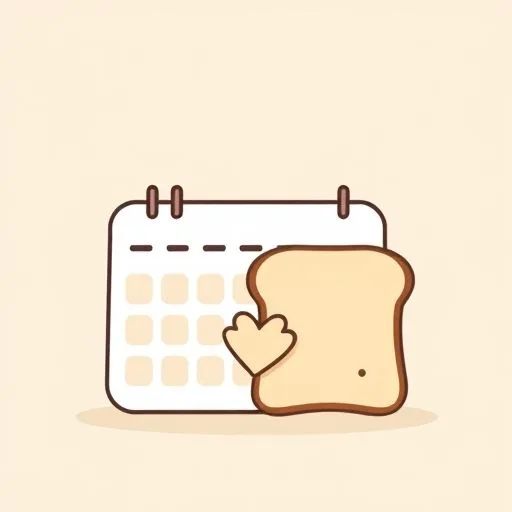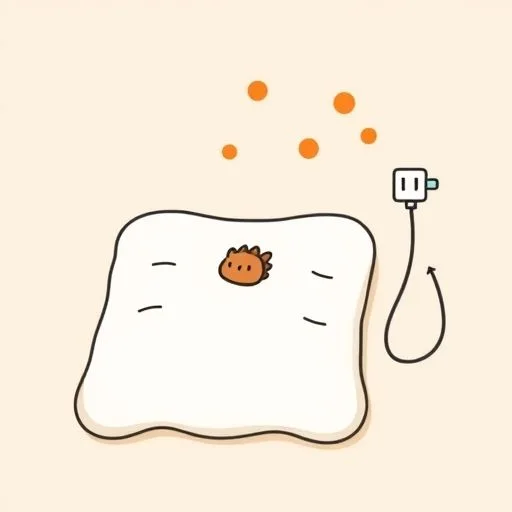
You know that quiet hour after the kids finally sleep, when the house settles into its own rhythm? I was loading the dishwasher last night, listening to the hum of appliances, when her phone lit up with another notification—some AI reminder about tomorrow’s schedule. It struck me then: our home is full of these invisible guests now, whispering suggestions, organizing our lives. But in all this efficiency, I’ve been watching her—the way she still chooses to cut apple slices into stars, the way she looks up from screens to meet our eyes. That’s the real balance we’re figuring out, isn’t it? Not how to use AI, but how to stay human while we do.
The Efficiency That Forgets to Breathe

Our son asked her yesterday why we don’t have one of those voice assistants like his friend’s house does. She smiled that tired-but-warm smile and said, ‘Because we have me—and I remember your favorite stories without needing batteries.’ He giggled and hugged her leg, and I saw it then: the choice we’re making every day. The AI could tell us the weather, but it can’t feel the rain on our skin together. It can schedule playdates, but it can’t wipe away tears when friends cancel.
I’ve noticed how she leaves her phone face-down during dinner, how we still write those notes by hand in lunchboxes even when digital reminders would be faster. It’s not about pushing technology away—it’s about protecting something quieter, something that beeps and algorithms can’t replicate.
The Unseen Weight of Digital Helpers

Which brings me to something I’ve been noticing… There’s this look she gets sometimes when another notification pops up during story time—a slight tightening around her eyes that says she’s measuring herself against these perfect digital systems. The AI doesn’t get tired, doesn’t forget to add milk to the grocery list, doesn’t need coffee to function in the morning. But it also doesn’t know our daughter prefers her toast cut diagonally, or that our son needs an extra hug after nightmares.
I’ve watched her navigate this tension: using technology where it helps, but never letting it become the third parent in our home. She’ll ask the AI for recipe ideas, but still taste-test everything herself. She’ll set digital reminders for school events, but still write ‘I love you’ on the calendar in her own handwriting.
The Moments No Algorithm Can Schedule

Last Sunday, she unplugged everything—not just devices, but that constant low hum of digital anticipation. We spread a blanket on the floor and told stories without screens. Our son invented a tale about dragons who ate only broccoli, and our daughter drew pictures in the air with her fingers. Her laughter filled the spaces that notifications usually occupy.
That’s the thing about AI—it can optimize our time, but it can’t create these unplanned moments of connection. It can remind us to call grandparents, but it can’t replicate the way her voice softens when she talks to them. We’re learning that balance isn’t about strict limits; it’s about knowing when to let technology serve us, and when to serve each other instead.
The Human Update We Really Need

I found her last night looking at old photos on her phone—the AI had helpfully organized them by date and location. But she was scrolling slowly, pausing at the blurry ones, the imperfect moments. ‘The algorithm doesn’t know this was the day he learned to ride without training wheels,’ she said softly. ‘It just sees a poorly composed image.’
That’s when I understood: our family’s story isn’t in the metadata. It’s in the gaps between notifications, in the glances across crowded rooms, in the way she still reaches for my hand during movies even when the smart lights dim perfectly. The AI can keep track of our schedule, but it can’t schedule spontaneity. It can optimize our routines, but it can’t plan for joy.
So we’re learning to use technology like we use any tool—with intention. The devices stay in their place, but the heart? That always leads the way—right back to each other.
Source: Missed a loan repayment? Banks are deploying AI agents to follow up — here’s how, Economic Times, 2025-09-21
